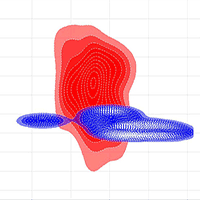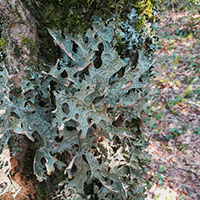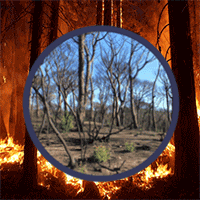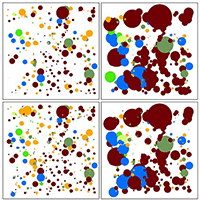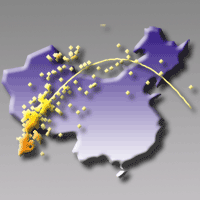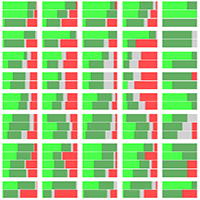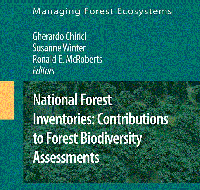
Retaining unlogged patches in Mediterranean oak forests may preserve threatened forest macrolichens
Zuzana Fačkovcová (1), Anna Guttová (1), Renato Benesperi (2), Stefano Loppi (3), Erika Bellini (4), Luigi Sanità di Toppi (4), Luca Paoli (4)
iForest - Biogeosciences and Forestry, Volume 12, Issue 2, Pages 187-192 (2019)
doi: https://doi.org/10.3832/ifor2917-012
Published: Apr 10, 2019 - Copyright © 2019 SISEF
Research Articles
Abstract
Forest management practices may heavily impact epiphytic (tree inhabiting) organisms. Retaining tree patches and buffer strips in logged stands may contribute to preserve ecosystem functioning and the vitality of epiphytic organisms in managed forests. To test these statements, the threatened forest macrolichen Lobaria pulmonaria (L.) Hoffm. was used as a model species, since it is a “flag” indicator species of forest ecosystems with long ecological continuity. To this purpose, photosynthetic performances, thallus anatomy and water holding capacity (WHC) of samples of L. pulmonaria were investigated in a logged mixed oak forest (Tuscany, Italy), confronting lichen thalli from retained-forest patches and retained-isolated trees, 18 months after logging. Compared with those of retained-forest patches, thalli on the trunks of retained-isolated trees were thinner and showed lower vitality (as indicated by the potential quantum yield of primary photochemistry - FV/FM and the index of overall photosynthetic performance - PIABS), as well as lower water holding capacity. In contrast, thalli from forest patches had performances comparable to those of healthy samples from unlogged forests.
Keywords
Biodiversity Conservation, Ecosystem Services, Forest Logging, Lobaria pulmonaria, Photosynthetic Performance, Water Holding Capacity
Authors’ Info
Authors’ address
Anna Guttová 0000-0001-9394-1077
Plant Science and Biodiversity Centre, Slovak Academy of Sciences, Dúbravská cesta 9, SK-84523 Bratislava (Slovakia)
Department of Biology, University of Florence, v. La Pira 4, I-50121 Florence (Italy)
Department of Life Sciences, University of Siena, v. Mattioli 4, I-53100 Siena (Italy)
Luigi Sanità di Toppi 0000-0002-8731-4904
Luca Paoli
Department of Biology, University of Pisa, v. Ghini 13, I-56126 Pisa (Italy)
Corresponding author
Paper Info
Citation
Fačkovcová Z, Guttová A, Benesperi R, Loppi S, Bellini E, Sanità di Toppi L, Paoli L (2019). Retaining unlogged patches in Mediterranean oak forests may preserve threatened forest macrolichens. iForest 12: 187-192. - doi: 10.3832/ifor2917-012
Academic Editor
Gianluca Piovesan
Paper history
Received: Jul 10, 2018
Accepted: Jan 18, 2019
First online: Apr 10, 2019
Publication Date: Apr 30, 2019
Publication Time: 2.73 months
Copyright Information
© SISEF - The Italian Society of Silviculture and Forest Ecology 2019
Open Access
This article is distributed under the terms of the Creative Commons Attribution-Non Commercial 4.0 International (https://creativecommons.org/licenses/by-nc/4.0/), which permits unrestricted use, distribution, and reproduction in any medium, provided you give appropriate credit to the original author(s) and the source, provide a link to the Creative Commons license, and indicate if changes were made.
Web Metrics
Breakdown by View Type
Article Usage
Total Article Views: 44174
(from publication date up to now)
Breakdown by View Type
HTML Page Views: 37466
Abstract Page Views: 3157
PDF Downloads: 2804
Citation/Reference Downloads: 3
XML Downloads: 744
Web Metrics
Days since publication: 2440
Overall contacts: 44174
Avg. contacts per week: 126.73
Citation Metrics
Article Citations
Article citations are based on data periodically collected from the Clarivate Web of Science web site
(last update: Mar 2025)
Total number of cites (since 2019): 10
Average cites per year: 1.43
Publication Metrics
by Dimensions ©
Articles citing this article
List of the papers citing this article based on CrossRef Cited-by.
References
Short- and long-term benefits for forest biodiversity of retaining unlogged patches in harvested areas. Forest Ecology and Management 353: 187-195.
CrossRef | Gscholar
Retention forestry to maintain multifunctional forests: a world perspective. BioScience 62 (7): 633-645.
CrossRef | Gscholar
The fluorescence transient as a tool to characterize and screen photosynthetic samples. In: “Probing Photosynthesis: Mechanism, Regulation and Adaptation” (Yunus M, Pathre U, Mohanty P eds). Taylor and Francis, London, UK, pp. 443-480.
Online | Gscholar
The diversity of lichenized fungi: ecosystem functions and ecosystem services. In: “Recent advances in Lichenology - Modern Methods and Approaches in Lichen Systematics and Culture Techniques, Volume 2” (Upreti DK, Divakar PK, Shukla V, Bajpai R eds). Springer, India, pp. 121-145.
CrossRef | Gscholar

